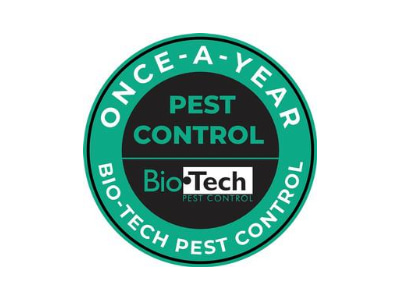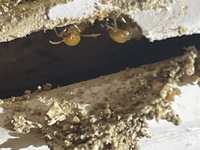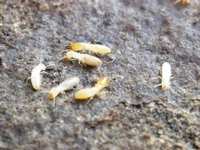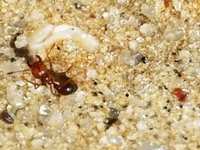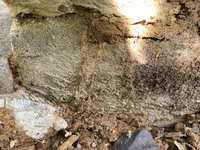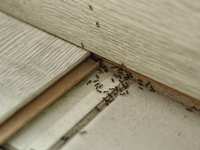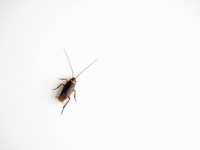- Categories :
- More
Thrips vs Springtails – Know the Difference

When warm and humid weather rolls into the Houston area, so do tiny pests that can cause big confusion for homeowners. Thrips vs springtails. Do you know the difference? Both small and active during similar times of year but they’re very different pests. Knowing the difference can help you understand what’s happening in your yard or home. In this post, we’ll break down thrips vs springtails, when they’re most active in Spring, Katy, and surrounding Texas communities, and how to tell them apart.
What Are Thrips?
Thrips are tiny, slender insects that feed on plants by puncturing them and sucking out their contents. Most species are under 1/16 of an inch long and can be difficult to see without magnification. They often appear dark or yellowish, and they can fly short distances using fringed wings.
When are thrips active?
In the Houston area—including Spring and Katy—thrips are most active in late spring through early fall. These pest populations start to rise as temperatures warm up in March and April. They are especially common in gardens, ornamental plants, and agricultural settings.
Why they’re a problem: Thrips can cause silvery streaks or spots on plant leaves and flowers, leading to distorted growth. In large numbers, they can damage crops, ornamentals, and even indoor plants.
What Are Springtails?
Springtails, on the other hand, are small, soft-bodied insects that thrive in moist environments. They don’t bite or damage plants, but they often appear in large numbers after heavy rain or overwatering, especially around mulch, soil, potted plants, or bathroom drains.
Springtails get their name from a unique appendage that lets them jump—think of them as tiny acrobats of the pest worl They’re typically gray or white and about the size of a grain of sand.
When Are Springtails Active?
Springtails are most commonly seen in early spring through the humid summer months, especially after rainstorms or irrigation. In the Spring, Houston, and Katy regions, their numbers can explode during wet weeks in March through July.
Why they’re a nuisance:
Springtails don’t bite or damage plants, but they can appear in large numbers and become a nuisance indoors, especially in bathrooms, basements, and kitchens. Their presence usually indicates excessive moisture.
To learn more about springtail habits and identification, check out Texas A&M AgriLife Extension’s resource on springtails.
👨🔧 For thrips vs springtails, Know When to Call a Pro
If you’re seeing either of these pests inside your home or damaging your garden, don’t wait until it becomes a bigger issue. Thrips can spread plant diseases, and springtails often indicate a moisture problem that could lead to mold or mildew.
At Bio-Tech Pest Control, we understand the seasonal pest trends in Spring, Katy, and the greater Houston area. If you’re unsure whether you’re dealing with thrips and springtails, or other pests, our licensed technicians can inspect your home or landscape and recommend targeted treatment options.
Bio-Tech Pest Control is here to help identify the source, apply targeted treatments, and give you peace of mind—so your yard and home stay pest-free all season long.
Call us today at 281-296-6022 or contact us to schedule your inspection!

